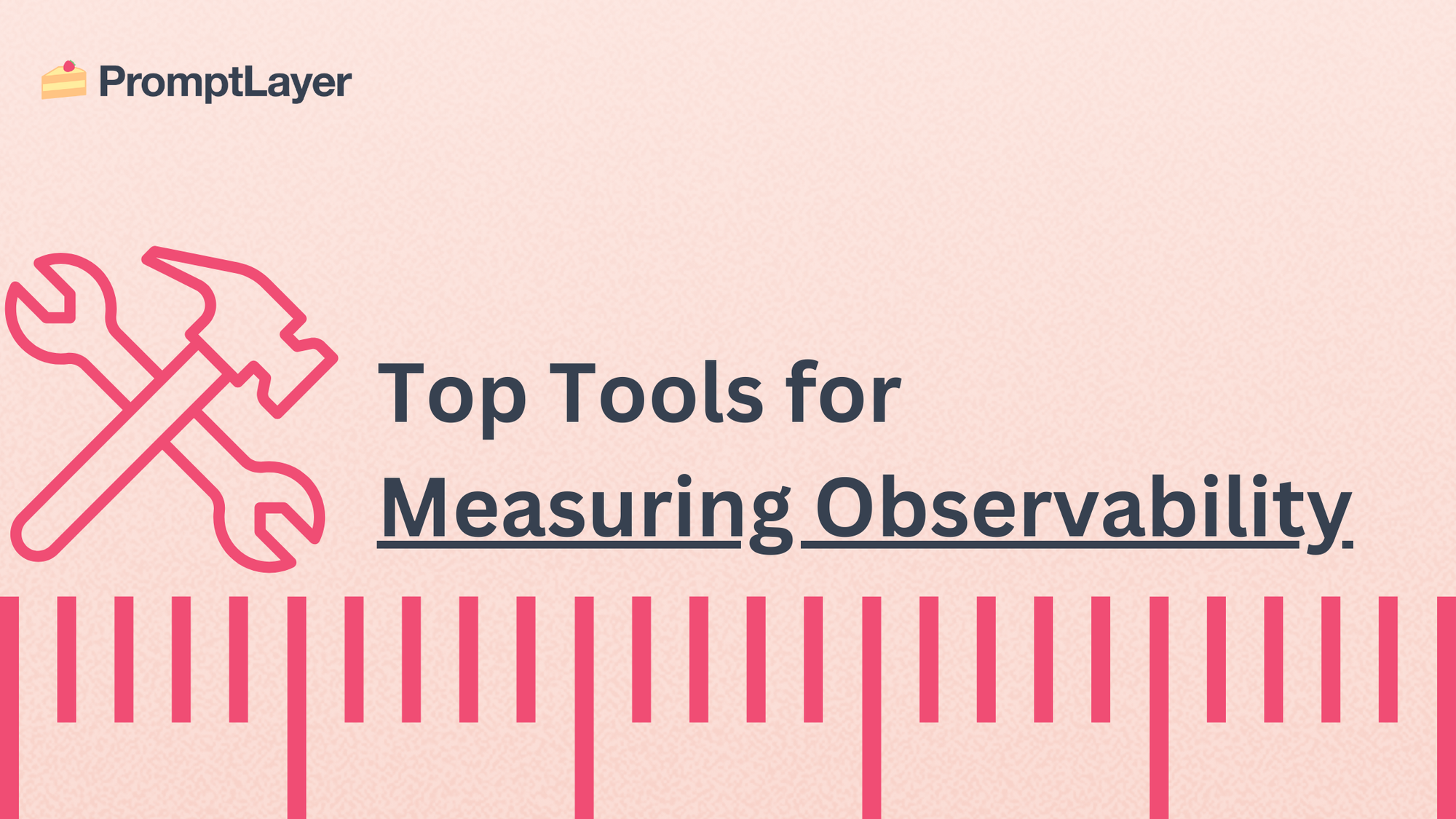Best Tools to Measure LLM Observability

Large language models (LLMs) are revolutionizing how we interact with technology, but their complexity introduces unique challenges for developers. Ensuring LLMs perform reliably and efficiently requires robust observability—the ability to understand and diagnose their behavior. This article compares the best tools for measuring LLM observability, examining their key features and helping you choose the right solution for your needs.
Why is LLM Observability Important?
LLM observability is crucial for several reasons:
- Understanding LLM Behavior: LLMs can produce unexpected outputs. Observability helps pinpoint the root causes of issues like hallucinations (generating false information) or biases.
- Performance Optimization: LLMs are resource-intensive. Observability tools track resource usage, latency, and throughput to ensure optimal performance and user experience. Identifying bottlenecks and optimizing resource allocation is crucial for cost-efficiency and scalability.
- Troubleshooting and Debugging: Quickly diagnosing and resolving errors is essential. Observability provides insights into the request-response cycle, enabling efficient debugging and minimizing downtime. Detailed logs, traces, and metrics help pinpoint the source of problems.
- Ensuring Quality and Reliability: Continuous monitoring of LLM outputs and user feedback allows for ongoing improvements in accuracy, relevance, and user satisfaction. Collecting and analyzing user feedback helps identify areas for improvement and ensures the LLM meets user expectations.
- Managing Costs: Tracking token usage and other cost metrics helps optimize spending and budget allocation. Understanding cost drivers enables efficient resource utilization and prevents unexpected expenses. Analyzing cost per query and identifying patterns of high usage can lead to significant cost savings.
- Security: Monitoring for prompt injection attacks, data leakage, and other security vulnerabilities is paramount. Observability tools can help detect and prevent malicious activities, ensuring the responsible use of LLMs. Implementing robust security measures protects sensitive data and maintains user trust.
PromptLayer is specifically designed for capturing and analyzing LLM interactions. Providing insights into prompt effectiveness, model performance, and overall system behavior.
With PromptLayer, your team can access:
- Prompt Versioning and Tracking
- Performance Monitoring
- Cost Analysis
- Error Detection and Debugging
- Frontier LLMs
Manage and monitor prompts with your whole team. Get started here.
Key Components of LLM Observability
Effective LLM observability relies on:
- Metrics: Quantitative measurements of performance (e.g., latency, error rates, token usage). These provide a high-level overview of system health and performance trends.
- Logs: Detailed records of events and actions within the LLM application. Logs offer context for understanding the sequence of events leading to specific outcomes.
- Traces: Tracking the path of requests through the LLM application to identify bottlenecks and optimize performance. Traces provide a granular view of the request-response lifecycle, revealing areas for improvement.
- Prompt Management: Tools for versioning and analyzing prompts to understand their impact on LLM outputs. Tracking prompt variations and their corresponding results enables data-driven prompt engineering.
- User Feedback: Mechanisms for collecting and analyzing user feedback to identify areas for improvement and enhance user satisfaction. Direct feedback from users provides valuable insights into real-world performance and areas needing refinement.
- Evaluations: Assessing the quality of LLM outputs using automated metrics, human evaluations, or LLM-based evaluations. Regular evaluations ensure the LLM continues to meet quality standards and identify potential degradation in performance.
Top Tools for Measuring LLM Observability
| Tool | Key Features | Pros | Cons |
|---|---|---|---|
| PromptLayer | Prompt versioning, performance monitoring, cost analysis, error detection, framework integrations | Purpose-built for LLM observability, granular prompt tracking, detailed cost analysis. | May be less versatile for general system observability outside of LLMs. |
| LangSmith | Prompt management, tracing, user feedback, evaluations, retrieval analysis | Strong LangChain integration, comprehensive features, user-friendly interface. | Limited self-hosting, cost analysis primarily focused on OpenAI. |
| Langfuse | Prompt management, tracing, usage monitoring, evaluations | Open-source, comprehensive features, self-hosting options. | May require more technical expertise. |
| Arize Phoenix | Tracing, user feedback, evaluations, retrieval analysis | Open-source, strong LLM evaluation, supports various frameworks. | Steeper learning curve. |
| Galileo | Prompt management, tracing, retrieval analysis, hallucination detection | Tailored for LLMs, advanced features, real-time monitoring. | Less versatile for general observability. |
| Datadog | End-to-end tracing, performance monitoring, quality evaluations, security features | Comprehensive monitoring, robust security, user-friendly interface. | Expensive. |
| WhyLabs and LangKit | Data monitoring, model monitoring, explainability, alerting | Focus on data quality and model health, explainability features, integrations. | May require technical expertise. |
| Confident AI & DeepEval | User feedback, tracing, retrieval analysis, evaluations | Framework-agnostic, strong tracing and evaluation, human-in-the-loop. | May require technical expertise for test case setup. |
| OpenTelemetry | Standardized collection of telemetry data (metrics, logs, traces) | Vendor-neutral, wide adoption, flexible integration with various backends. | Requires integrating with a visualization and analysis platform. |
Choosing the Right Tool:
Consider these factors when selecting a tool:
- Specific Needs: Prioritize features aligned with your use case (e.g., prompt management, cost monitoring).
- Technical Expertise: Choose a tool that matches your team's skills.
- Budget: Evaluate open-source vs. commercial options based on your resources.
- Integration: Ensure seamless integration with your existing infrastructure and LLM framework.
- Scalability: Select a tool that can handle future growth and increasing data volumes.
Last thoughts
LLM observability is essential for building and deploying reliable, efficient, and responsible AI applications. By leveraging the right tools and techniques, developers can gain valuable insights into LLM behavior, optimize performance, and mitigate potential risks, ultimately unlocking the full potential of this transformative technology. Remember to carefully evaluate your needs and choose the tool that best aligns with your specific requirements and resources.
About PromptLayer
PromptLayer is a prompt management system that helps you iterate on prompts faster — further speeding up the development cycle! Use their prompt CMS to update a prompt, run evaluations, and deploy it to production in minutes. Check them out here. 🍰



